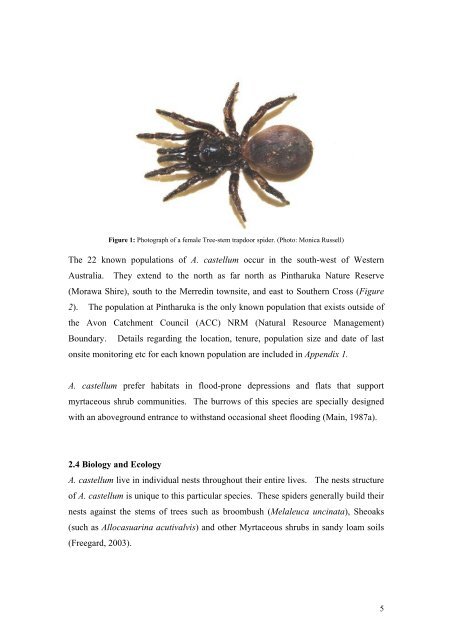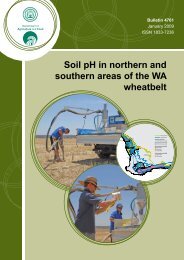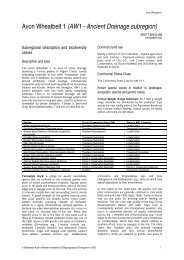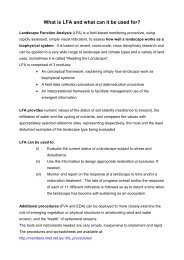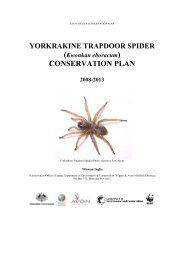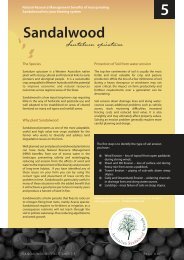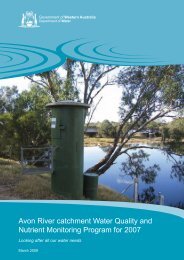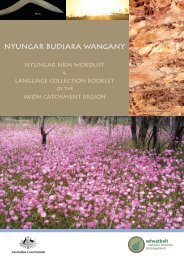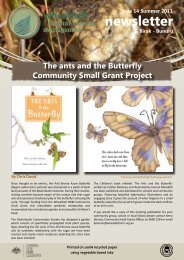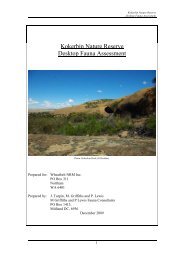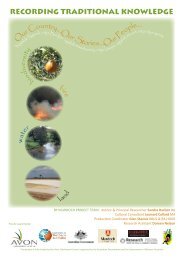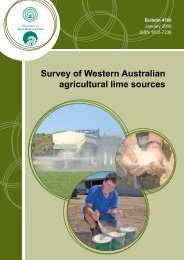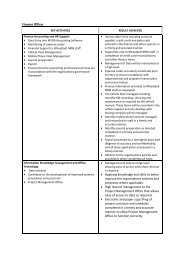Tree-Stem Trapdoor Spider (Aganippe castellum) - Wheatbelt NRM
Tree-Stem Trapdoor Spider (Aganippe castellum) - Wheatbelt NRM
Tree-Stem Trapdoor Spider (Aganippe castellum) - Wheatbelt NRM
Create successful ePaper yourself
Turn your PDF publications into a flip-book with our unique Google optimized e-Paper software.
Figure 1: Photograph of a female <strong>Tree</strong>-stem trapdoor spider. (Photo: Monica Russell)The 22 known populations of A. <strong>castellum</strong> occur in the south-west of WesternAustralia. They extend to the north as far north as Pintharuka Nature Reserve(Morawa Shire), south to the Merredin townsite, and east to Southern Cross (Figure2). The population at Pintharuka is the only known population that exists outside ofthe Avon Catchment Council (ACC) <strong>NRM</strong> (Natural Resource Management)Boundary. Details regarding the location, tenure, population size and date of lastonsite monitoring etc for each known population are included in Appendix 1.A. <strong>castellum</strong> prefer habitats in flood-prone depressions and flats that supportmyrtaceous shrub communities. The burrows of this species are specially designedwith an aboveground entrance to withstand occasional sheet flooding (Main, 1987a).2.4 Biology and EcologyA. <strong>castellum</strong> live in individual nests throughout their entire lives. The nests structureof A. <strong>castellum</strong> is unique to this particular species. These spiders generally build theirnests against the stems of trees such as broombush (Melaleuca uncinata), Sheoaks(such as Allocasuarina acutivalvis) and other Myrtaceous shrubs in sandy loam soils(Freegard, 2003).5


